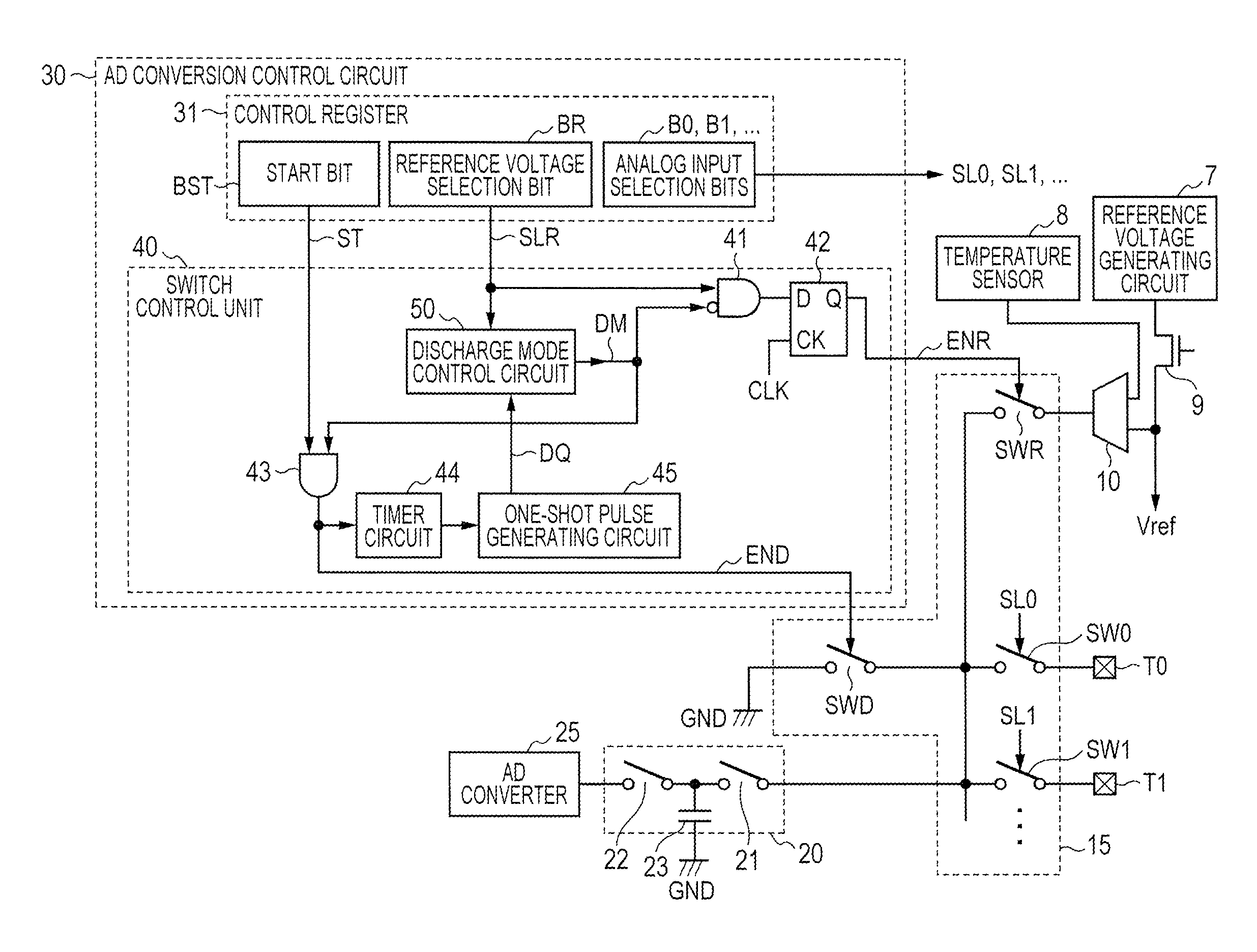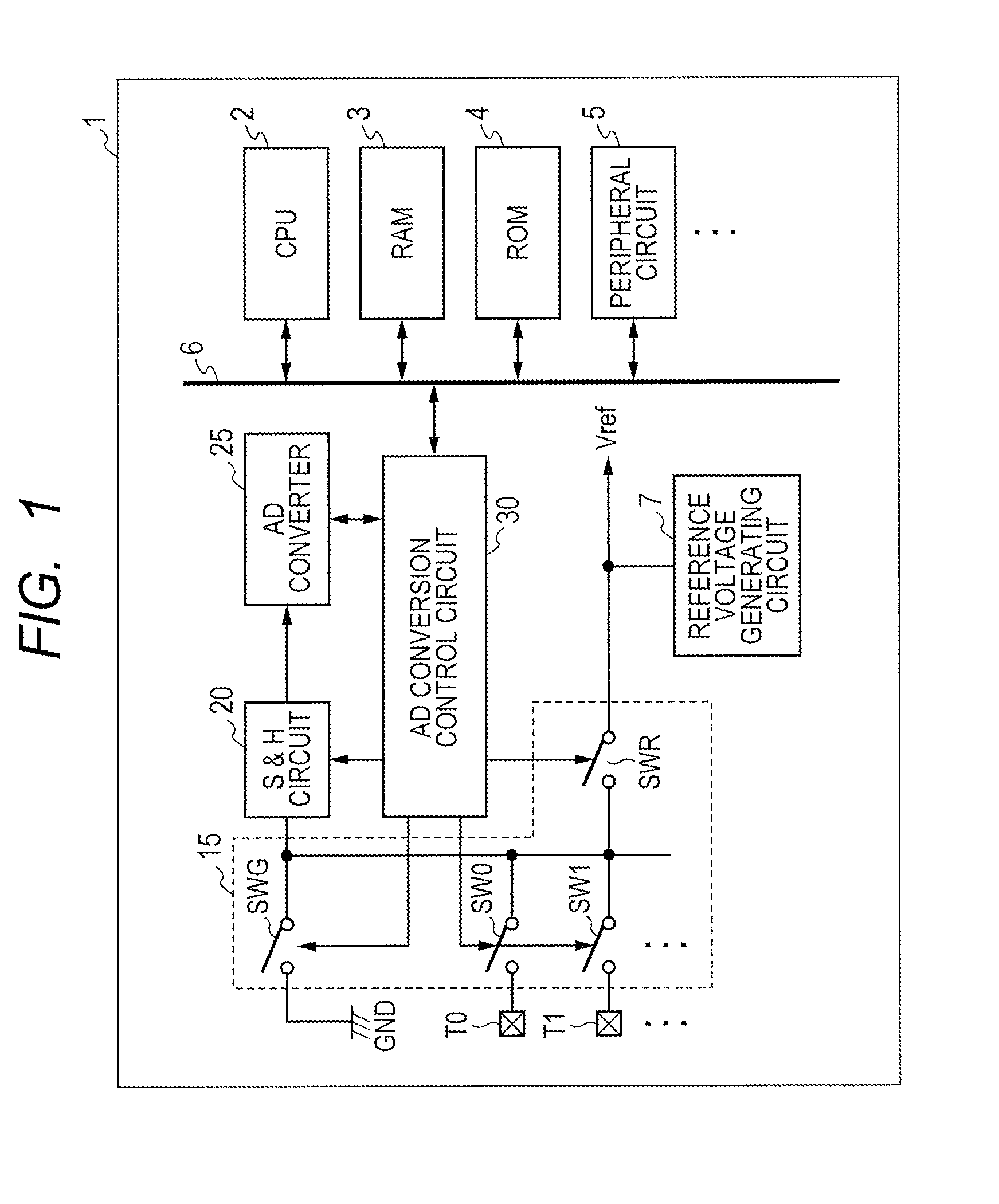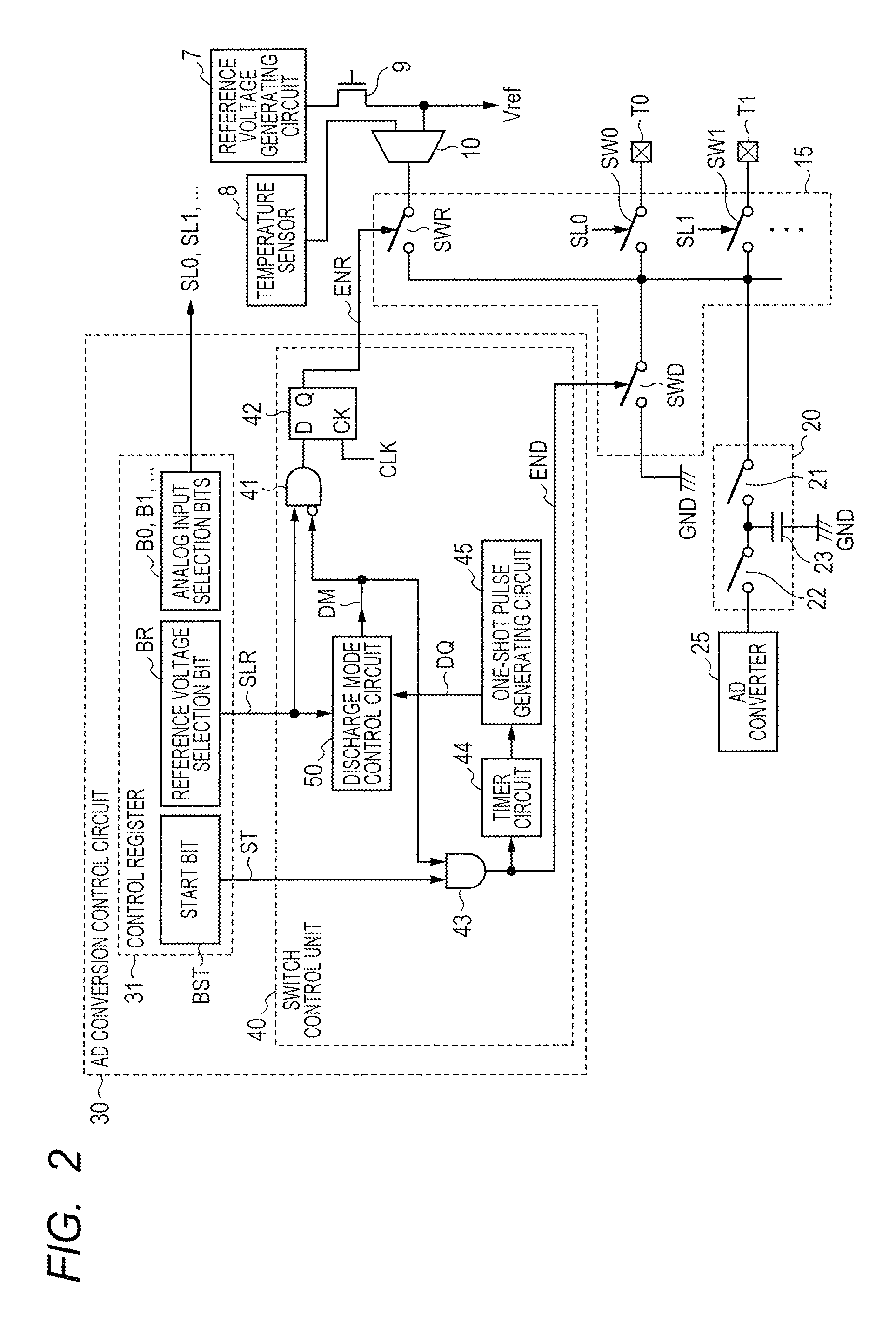Semiconductor device
- Summary
- Abstract
- Description
- Claims
- Application Information
AI Technical Summary
Benefits of technology
Problems solved by technology
Method used
Image
Examples
first embodiment
General Configuration of Microcomputer Chip
[0023]FIG. 1 is a block diagram illustrating an example of the configuration of a microcomputer chip as a first embodiment.
[0024]Referring to FIG. 1, a microcomputer chip 1 includes a CPU (Central Processing Unit) 2, a RAM (Random. Access Memory) 3, a ROM (Read Only Memory) 4, and other peripheral circuits 5 such as input / output circuits. The components are coupled to one another via a bus 6.
[0025]The CPU 2 controls the general operation of the microcomputer chip 1 by executing a program stored in the RAM 3 and the ROM 4. The RAM 3 and the ROM 4 are used as main storages of the CPU 2.
[0026]The microcomputer chip 1 further includes a sample and hold (S & H) circuit 20, an AD converter 25, an AD conversion control circuit 30, a switching unit 15, and a reference voltage generating circuit 7.
[0027]The AD converter 25 performs AD conversion of voltage held in the sample and hold circuit 20. The AD conversion method may be any of integrating con...
second embodiment
[0062]In the conventional AD conversion control circuit, the user can selectively choose whether the discharge mode is set or not. Specifically, the voltage held in the sample and hold circuit can be discharged not only before execution of the AD conversion of the internal reference voltage or the temperature sensor circuit but also before execution of the AD conversion of analog voltage supplied from the outside. To an AD conversion control circuit of a second embodiment, a function of allowing the user to freely choose whether the voltage held in the sample and hold circuit is discharged or not is added. Hereinafter, it will be concretely described with reference to FIGS. 6 and 7.
[0063]FIG. 6 is a block diagram illustrating the configuration of a part of an AD conversion control circuit as the second embodiment. FIG. 7 is a circuit diagram illustrating the configuration of a discharge mode control circuit in FIG. 6.
[0064]An AD conversion control circuit 30A in FIG. 6 is different ...
third embodiment
[0067]The AD conversion control circuit 30 of the first embodiment is configured to always discharge the voltage held in the sample and hold circuit before performing the AD conversion of the internal reference voltage or the output signal of the temperature sensor circuit. However, in the case where a voltage equal to or less than the withstand voltage of the low-voltage transistor is held in the sample and hold circuit, the low-voltage transistor is not destroyed even if the held voltage is not discharged. Consequently, an AD conversion control circuit 30B of a third embodiment has a configuration to determine whether or not voltage held in the sample and hold circuit is discharged depending on whether or not the voltage held in the sample and hold circuit (that is, the AD conversion result of last time) exceeds the withstand voltage of the low-voltage transistor. Hereinafter, it will be concretely described with reference to FIGS. 8 and 9. The third embodiment can be combined wit...
PUM
 Login to View More
Login to View More Abstract
Description
Claims
Application Information
 Login to View More
Login to View More - R&D
- Intellectual Property
- Life Sciences
- Materials
- Tech Scout
- Unparalleled Data Quality
- Higher Quality Content
- 60% Fewer Hallucinations
Browse by: Latest US Patents, China's latest patents, Technical Efficacy Thesaurus, Application Domain, Technology Topic, Popular Technical Reports.
© 2025 PatSnap. All rights reserved.Legal|Privacy policy|Modern Slavery Act Transparency Statement|Sitemap|About US| Contact US: help@patsnap.com



